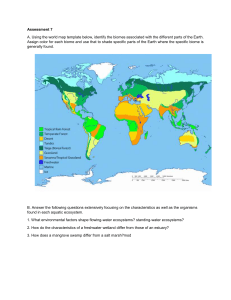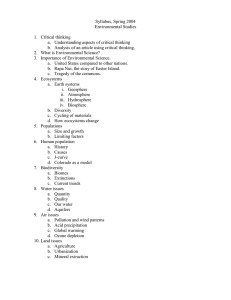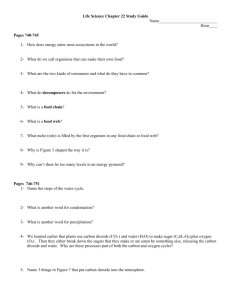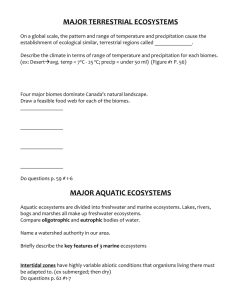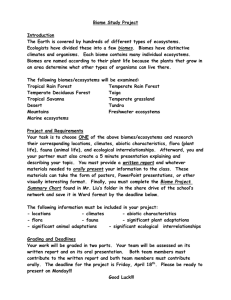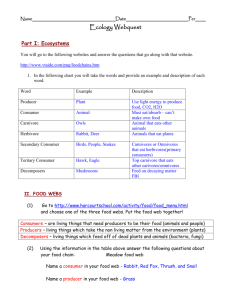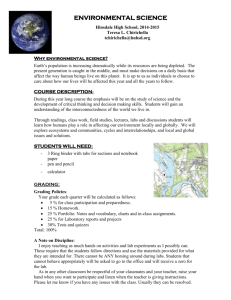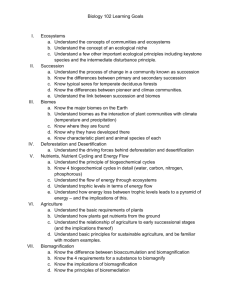Biomes: Global Patterns of Life - Chapter Outline & Vocabulary
advertisement
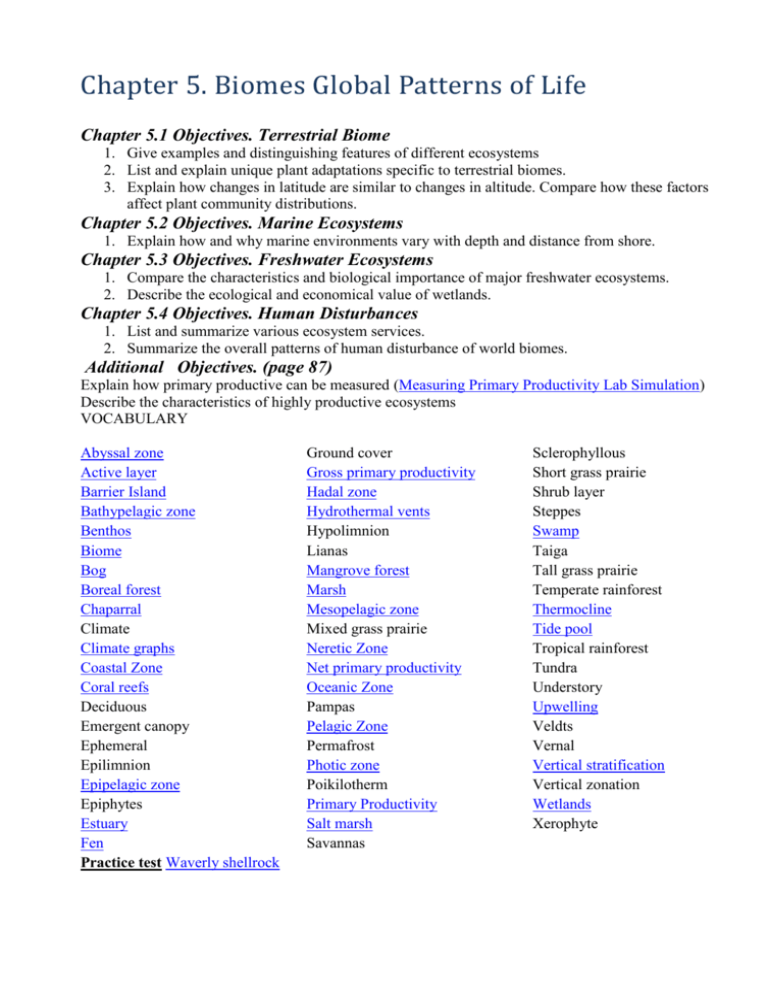
Chapter 5. Biomes Global Patterns of Life Chapter 5.1 Objectives. Terrestrial Biome 1. Give examples and distinguishing features of different ecosystems 2. List and explain unique plant adaptations specific to terrestrial biomes. 3. Explain how changes in latitude are similar to changes in altitude. Compare how these factors affect plant community distributions. Chapter 5.2 Objectives. Marine Ecosystems 1. Explain how and why marine environments vary with depth and distance from shore. Chapter 5.3 Objectives. Freshwater Ecosystems 1. Compare the characteristics and biological importance of major freshwater ecosystems. 2. Describe the ecological and economical value of wetlands. Chapter 5.4 Objectives. Human Disturbances 1. List and summarize various ecosystem services. 2. Summarize the overall patterns of human disturbance of world biomes. Additional Objectives. (page 87) Explain how primary productive can be measured (Measuring Primary Productivity Lab Simulation) Describe the characteristics of highly productive ecosystems VOCABULARY Abyssal zone Active layer Barrier Island Bathypelagic zone Benthos Biome Bog Boreal forest Chaparral Climate Climate graphs Coastal Zone Coral reefs Deciduous Emergent canopy Ephemeral Epilimnion Epipelagic zone Epiphytes Estuary Fen Practice test Waverly shellrock Ground cover Gross primary productivity Hadal zone Hydrothermal vents Hypolimnion Lianas Mangrove forest Marsh Mesopelagic zone Mixed grass prairie Neretic Zone Net primary productivity Oceanic Zone Pampas Pelagic Zone Permafrost Photic zone Poikilotherm Primary Productivity Salt marsh Savannas Sclerophyllous Short grass prairie Shrub layer Steppes Swamp Taiga Tall grass prairie Temperate rainforest Thermocline Tide pool Tropical rainforest Tundra Understory Upwelling Veldts Vernal Vertical stratification Vertical zonation Wetlands Xerophyte
